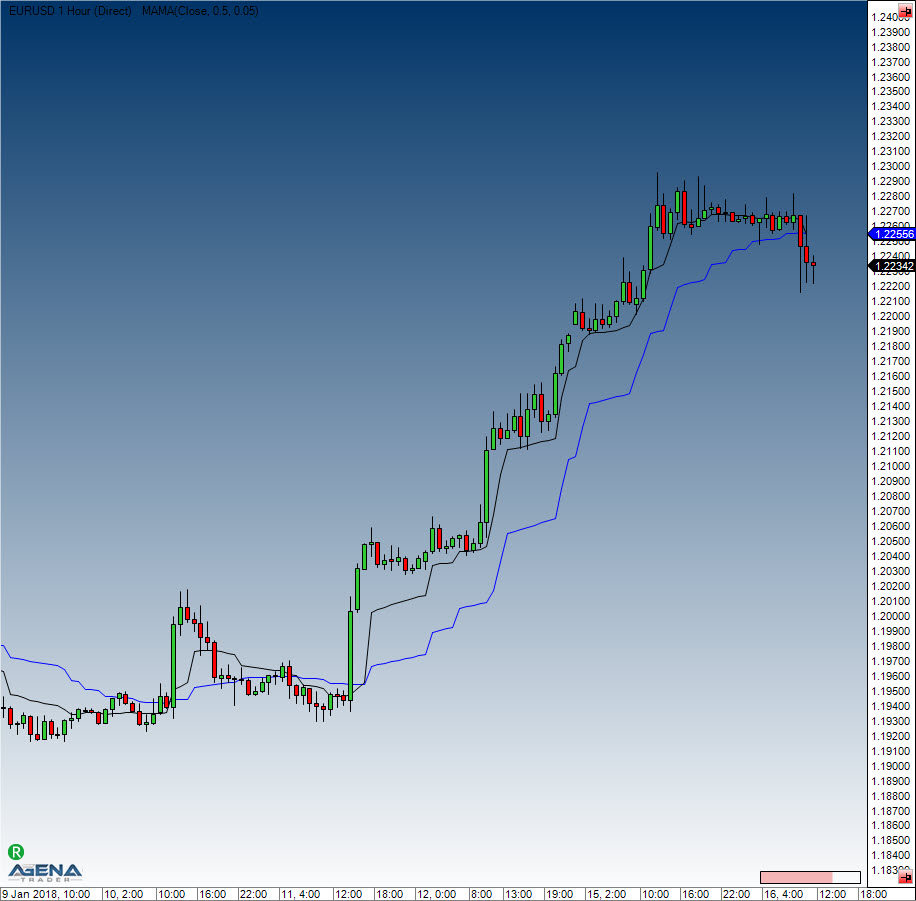MAMA - Mesa Adaptive Moving Average
Description
This automatically adapting moving average has a period length that is determined by means of various complex calculations. This complex indicator has its origins in publications by John Ehlers. Ehlers calculates cycles for the price movements to determine the length and intensity of single trend phases. Working with the length of the cycles, the weighting factor for the moving average can be established in several different ways.
FAMA This indicator is a second line – the name FAMA can be found in various publications. This line is similar to the underlying exponential moving average and can be used as a trigger line.
Interpretation
For more concise information, we recommend that you read Ehler’s paper.
General information about moving averages can be found here: Moving Averages.
Further information
http://www.tradesignalonline.com/de/lexicon/view.aspx?id=MAMA+adaptive+Moving+Average
Usage
MAMA(double fastLimit, double slowLimit)
MAMA(IDataSeries inSeries, double fastLimit, double slowLimit)
MAMA(double fastLimit, double slowLimit)[int barsAgo]
MAMA(IDataSeries inSeries, double fastLimit, double slowLimit)[int barsAgo]
//Value of the Following Adaptive Moving Average (FAMA)
MAMA(double fastLimit, double slowLimit).Fama[int barsAgo]
MAMA(IDataSeries inSeries, double fastLimit, double slowLimit).Fama[int barsAgo]Return value
double
When using this method with an index (e.g. MAMA(0.5,0.05)[int barsAgo] ), the value of the indicator will be issued for the referenced bar.
Parameters
inSeries Input data series for the indicator
fastLimit Upper limit for the alpha value
slowLimit Lower limit for the alpha value
Visualization

Example
Last updated